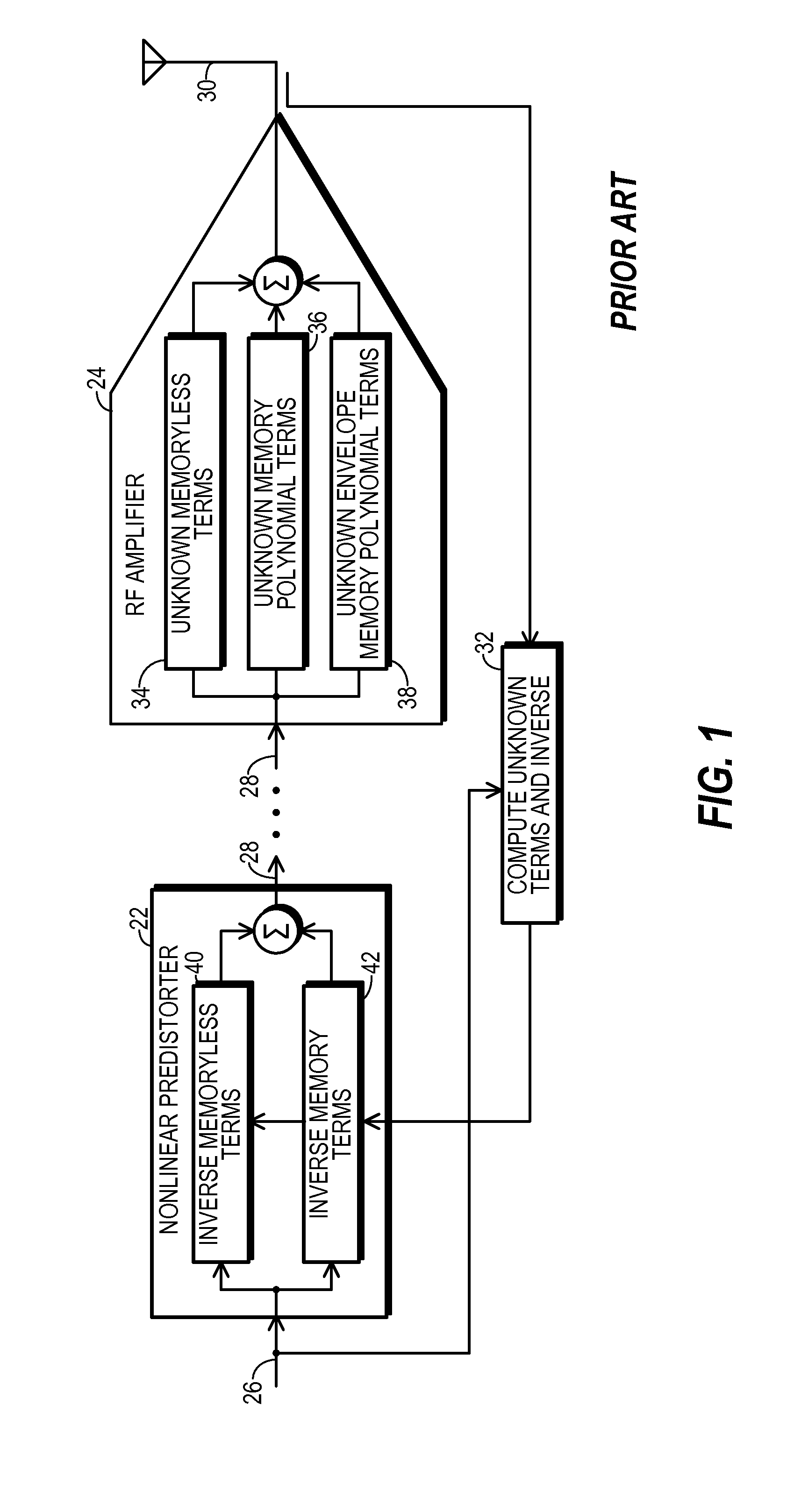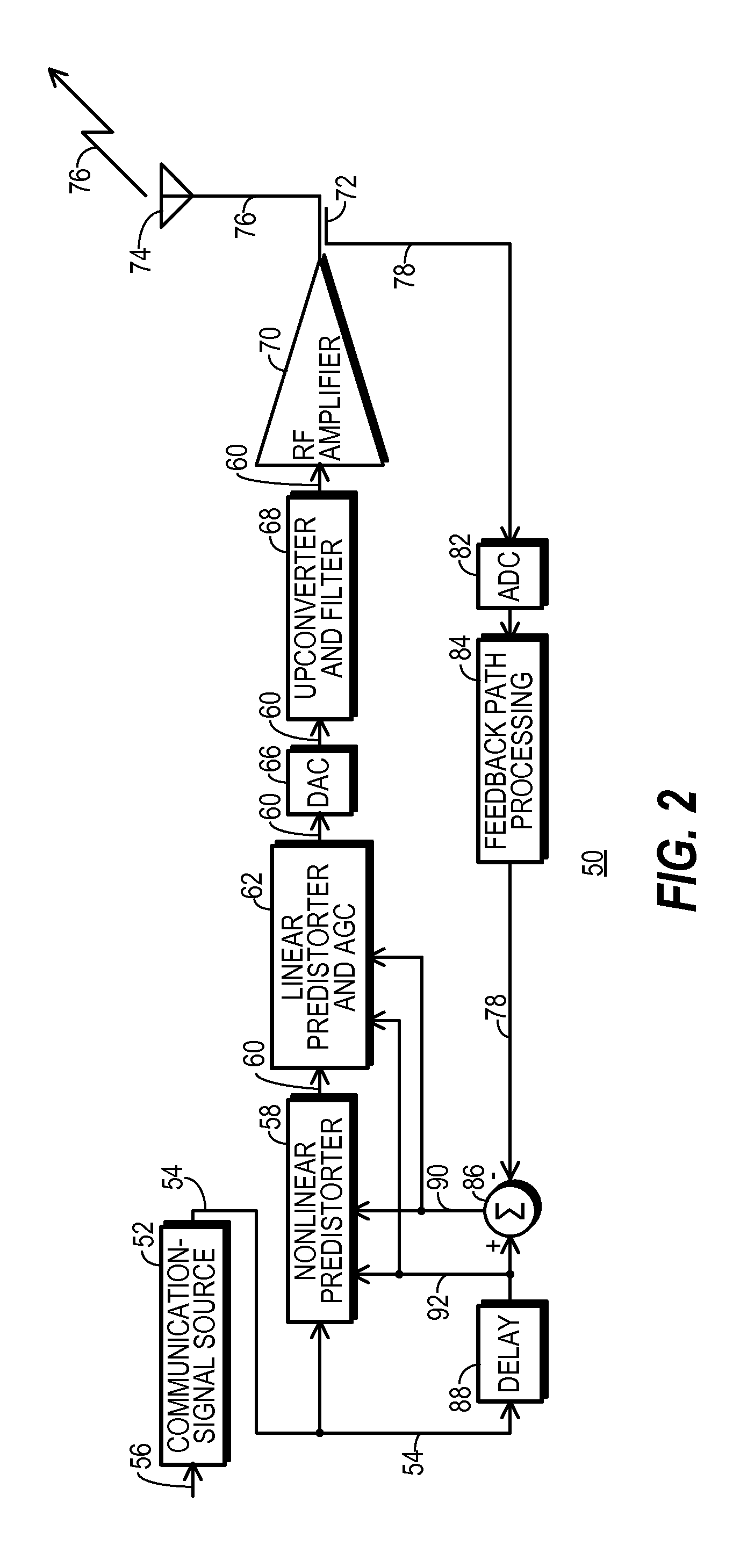Transmitter linearized using cartesian-processed look-up table and method therefor
a technology of cartesian processing and receiver, applied in the field of predistorters, can solve the problems of transmitter failure to successfully operate transmitters may fail to achieve the effect of successfully operating within the spectral mask imposed by regulations and/or power specifications, and real-world amplifiers tend to exhibit nonlinear performance to some degr
- Summary
- Abstract
- Description
- Claims
- Application Information
AI Technical Summary
Benefits of technology
Problems solved by technology
Method used
Image
Examples
first embodiment
[0038]FIG. 3 shows a simplified block diagram of transmitter 50 as discussed above and as shown in FIG. 2, but with details shown concerning nonlinear predistorter 58, with a behavioral model 94 for amplifier 70, and with other details omitted.
[0039]The block diagram of model 94 presented in FIG. 3 provides an explanation for the way in which linear and nonlinear influences from amplifier 70 appear to behave. Those skilled in the art will appreciate that amplifier 70 is constructed from real components and materials that fail to operate precisely as desired. Accordingly, models, such as model 94, may be devised to explain the manner in which amplifier 70 appears to actually operate. The specific components of model 94 need not be observable in a real world version of amplifier 70.
[0040]Model 94 depicts amplifier 70 as having its transfer function, referred to below as a nonlinear amplifier transform, partitioned into two distinct types of nonlinear components. The two types include ...
second embodiment
[0091]This second embodiment of adaptive control section 112 uses a magnitude normalizer 151 in lieu of two-quadrant multiplier 144 depicted in FIG. 5. All other components of adaptive control section 112 are the same as depicted in FIG. 5. Magnitude normalizer 151 has a first input coupled to the output of magnitude extraction section 134 to receive magnitude signal 126. Magnitude signal 126 drives an inversing section 153 that determines the inverse of magnitude signal 126. Preferably, inversing section 153 is formed using a look-up table (LUT) to avoid the need of performing division operations. But the LUT may be addressed by only the more significant bits of magnitude signal 126 and therefore have far fewer data entries than are included in LUT 122.
[0092]An output of inversing section 153 drives a first input of a multiplier 154 and a first input of a multiplier 155. Scaling constant 146 (μ) is supplied to a second input of multiplier 154, and an output of multiplier 154 drives...
PUM
 Login to View More
Login to View More Abstract
Description
Claims
Application Information
 Login to View More
Login to View More - R&D
- Intellectual Property
- Life Sciences
- Materials
- Tech Scout
- Unparalleled Data Quality
- Higher Quality Content
- 60% Fewer Hallucinations
Browse by: Latest US Patents, China's latest patents, Technical Efficacy Thesaurus, Application Domain, Technology Topic, Popular Technical Reports.
© 2025 PatSnap. All rights reserved.Legal|Privacy policy|Modern Slavery Act Transparency Statement|Sitemap|About US| Contact US: help@patsnap.com



